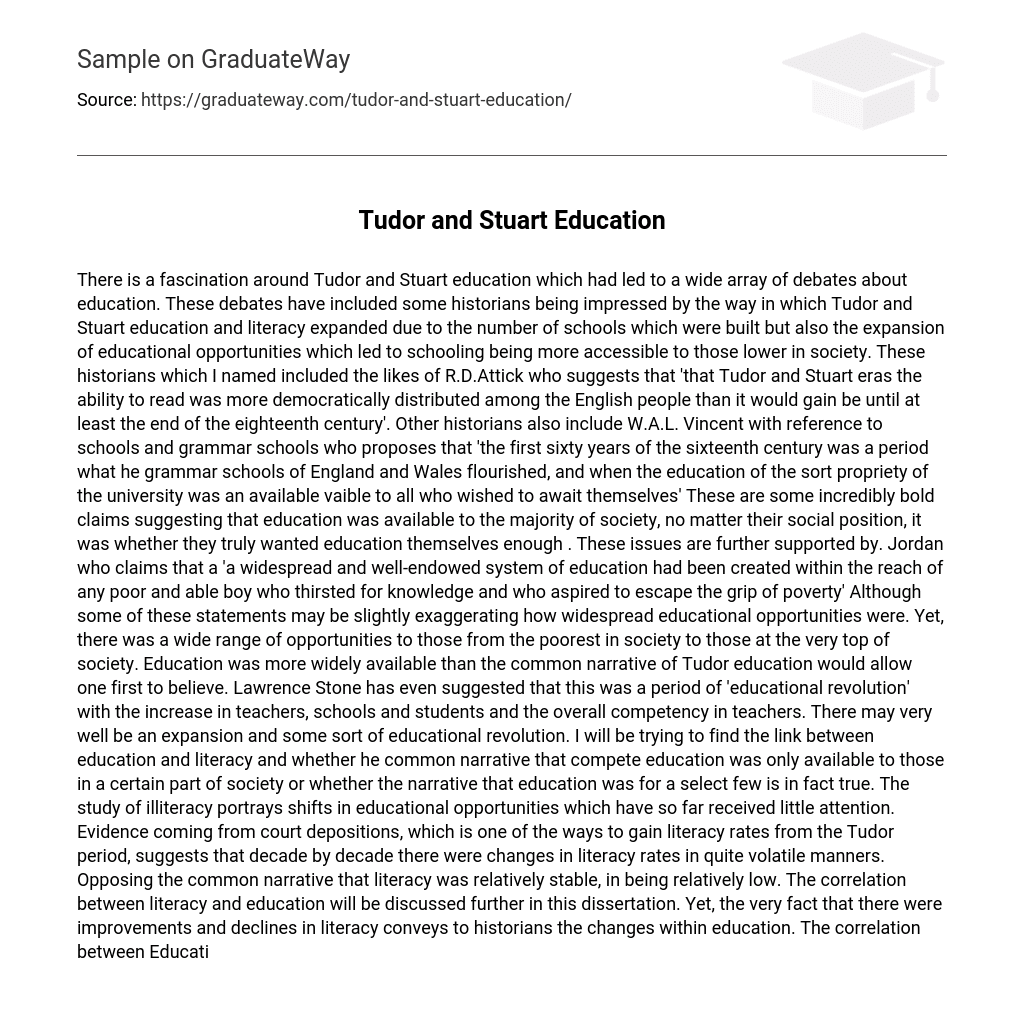There is a fascination around Tudor and Stuart education which had led to a wide array of debates about education. These debates have included some historians being impressed by the way in which Tudor and Stuart education and literacy expanded due to the number of schools which were built but also the expansion of educational opportunities which led to schooling being more accessible to those lower in society.
These historians which I named included the likes of R.D.Attick who suggests that ‘that Tudor and Stuart eras the ability to read was more democratically distributed among the English people than it would gain be until at least the end of the eighteenth century’. Other historians also include W.A.L. Vincent with reference to schools and grammar schools who proposes that ‘the first sixty years of the sixteenth century was a period what he grammar schools of England and Wales flourished, and when the education of the sort propriety of the university was an available vaible to all who wished to await themselves’ These are some incredibly bold claims suggesting that education was available to the majority of society, no matter their social position, it was whether they truly wanted education themselves enough . These issues are further supported by.
Jordan who claims that a ‘a widespread and well-endowed system of education had been created within the reach of any poor and able boy who thirsted for knowledge and who aspired to escape the grip of poverty’ Although some of these statements may be slightly exaggerating how widespread educational opportunities were. Yet, there was a wide range of opportunities to those from the poorest in society to those at the very top of society. Education was more widely available than the common narrative of Tudor education would allow one first to believe. Lawrence Stone has even suggested that this was a period of ‘educational revolution’ with the increase in teachers, schools and students and the overall competency in teachers.
There may very well be an expansion and some sort of educational revolution. I will be trying to find the link between education and literacy and whether he common narrative that compete education was only available to those in a certain part of society or whether the narrative that education was for a select few is in fact true. The study of illiteracy portrays shifts in educational opportunities which have so far received little attention. Evidence coming from court depositions, which is one of the ways to gain literacy rates from the Tudor period, suggests that decade by decade there were changes in literacy rates in quite volatile manners.
Opposing the common narrative that literacy was relatively stable, in being relatively low. The correlation between literacy and education will be discussed further in this dissertation. Yet, the very fact that there were improvements and declines in literacy conveys to historians the changes within education. The correlation between Education and literacy is clear. Using the modern context, the most common reflection of Literacy is Education.
Although this is hard to translate to a case over five hundred years ago it conveys the importance which education had and still does on literacy. Nevertheless, there are external factors which can also impact literacy rates, such as the political climate, the social impacts or the Tudor government’s willingness to spend on schooling. This conveys to historians that the once thought narrative that illiteracy was spread throughout the country is disputed by various suggestions by estimations of literacy rates and other court depositions. Although the validity of some of these primary sources can be questioned to a certain extent, they offer some sort of insight into what is predicted to be the educational opportunities during the Tudor period.





